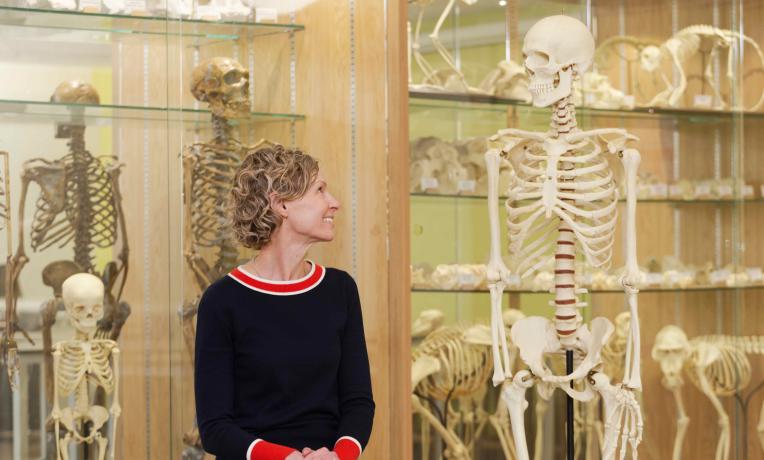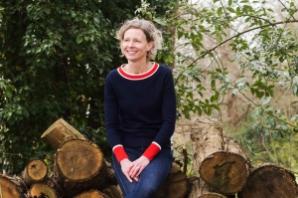Unearthing the secrets of human evolution through research into fossilised hands

Like many paleoanthropologists, Tracy Kivell, a professor at the University of Kent, UK, was excited to learn about the discovery of two unusual skeletons in a South African cave in 2008. The nearly 2-million-year-old bones belonged to Australopithecus sediba, an extinct species of ape that could be a potential human ancestor.
‘What really grabbed my attention was the fact that there was this beautiful fossilised lower arm bone going into rock’, explains Kivell. ‘I remember thinking that if there is a hand at the end of that arm, I would really like to work on that! And of course, there was. This was really a dream come true for a paleoanthropologist interested in hands.’
At the time, Kivell was conducting research on primate locomotion and biomechanics, and was becoming increasingly interested in studying the internal structure of bone. She saw an ERC grant as the perfect means of combining these interests. ‘What this grant enabled me to do was to take a really multidisciplinary approach to reconstructing behaviour from the past’, she explains.
Cutting-edge techniques
To investigate internal bone structure, it is necessary to first scan the fossils using 3D x-rays to understand what is contained within. Separating this fossilised bone from the surrounding rock, however, has always been more of a challenge. Bone tends to be a different density to the rock, so scientists have typically had to separate the fossilised bone manually, which is a time-consuming process. Christopher Dunmore, who completed his PhD with Kivell at the University of Kent and played a critical role in the research, wanted to develop a more precise and faster method of identifying bone.
‘We developed a machine learning algorithm that enables a computer to automatically discern densities that indicate rock from those indicating fossil bone’, he explains. ‘All you are left with in the 3D x-ray is bone, including its delicate internal structure.’ The technique, which was applied to the A. sediba skeleton, is now freely available for anyone to use.
Another key aspect of the project was its study of living humans and other apes. They investigated the pressures experienced by ape hands when hanging from trees or when walking on knuckles, as well as how humans use stone tools to cut meat or manipulate objects.
‘All this information helped us to create realistic virtual models to represent how hand bones are used for different behaviours’, says Kivell. ‘This had not been done before.’
The role of hands
The depth and breadth of this research enabled Kivell’s project team to make some impressive discoveries. For example, the project was able to demonstrate that some fossil human species still used their hands for climbing, while at the same time being capable of complex tool use.
‘Often, we find fossils that look maybe halfway between human and ape’, says Dunmore. ‘We were able to show that the A. sediba fossil was different. It offered extremes. While the hands were used for swinging through branches, the thumb-use was distinctly human-like.’
These discoveries have significant implications for our understanding of human evolution. They show for example that primate hands could have evolved in numerous different ways, not necessarily in the linear manner that many typically might imagine.
‘The new fossils have revealed combinations of anatomy that could never have been predicted from just looking at humans or apes’, adds Kivell. ‘The key was being able to interpret behaviour from fossils in a more comparative and robust way.’
Another legacy of the project has been an abiding appreciation of just how complex internal bone structure is. ‘I am really interested to focus in the future on how high impact behaviours, like running or climbing, are reflected in bone, to assess the adaptability of bone structure’, says Kivell.
How the ERC transformed science - interview with Tracy Kivell
About the researcher
Tracy Kivell is a paleoanthropologist and Professor of Biological Anthropology at the University of Kent, UK. She obtained her PhD in 2007 from the University of Toronto, Canada, before teaching human anatomy at Duke University, USA. Between 2009 and 2013, she was a junior researcher in the Department of Human Evolution at the Max Planck Institute for Evolutionary Anthropology, Germany, where she remains an affiliated researcher. She received an ERC Starting Grant in 2013 and is currently a collaborator on an ERC Consolidator Grant awarded in 2018.


